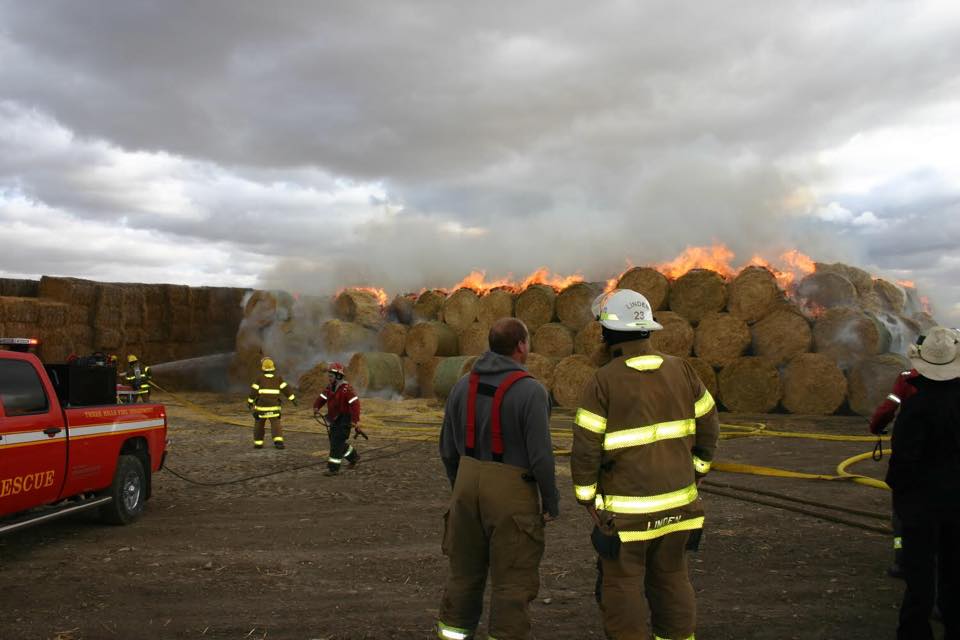
Growing crops from seed to harvest can be filled with many challenges, including the risk of agricultural equipment fires which can cost thousands in damages and lost revenue.
While there are some factors beyond a farmer’s control, such as hot, dry weather conditions, there are also some measures farmers can take to prevent equipment fires from starting, or to keep damages at a minimum.
“In 2022, between all of the (Kneehill County) departments, there have been 18 grass, field, and bale fires, and eight vehicle, combine, baler, and tractor fires,” Kneehill County Director of Emergency Management and Protective Services manager Deb Grosfield tells the Mail.
Kneehill County shared several prevention and safety tips to its social media platforms in September to help reduce the risk of equipment and field fires during harvest.
The top two tips encouraged keeping machinery clean of crop residue and chaff, which can build up in cracks and crevasses and pose risk of ignition if met with a source of ignition or heat, and ensuring machinery is properly maintained to reduce potential ignition sources.
This is a sentiment echoed by neighbouring Wheatland County.
Equipment fires are a risk in any given year, and Wheatland County Emergency and Fire Services manager and Fire Chief Michael Bourgon says the number one way farmers can mitigate this risk is through proper maintenance.
He adds dry conditions can also exponentially increase the risk of fires during harvest, though this is something farmers do not have control over.
Although specific data regarding the number of fires Wheatland County departments have responded to was unavailable, Mr. Bourgon says there were several equipment fires this year, though this is “about on par” with other years.
Mr. Bourgon adds the farming community is very community oriented, and it is not uncommon to see neighbours rushing in to offer help until firefighters arrive.
In the event of a fire, both Wheatland and Kneehill County recommend having tillage equipment such as a disk drill on hand to limit flames from spreading out of control, and reduce damages; all equipment should also have a fully charged, easily accessible fire extinguisher on hand.

















